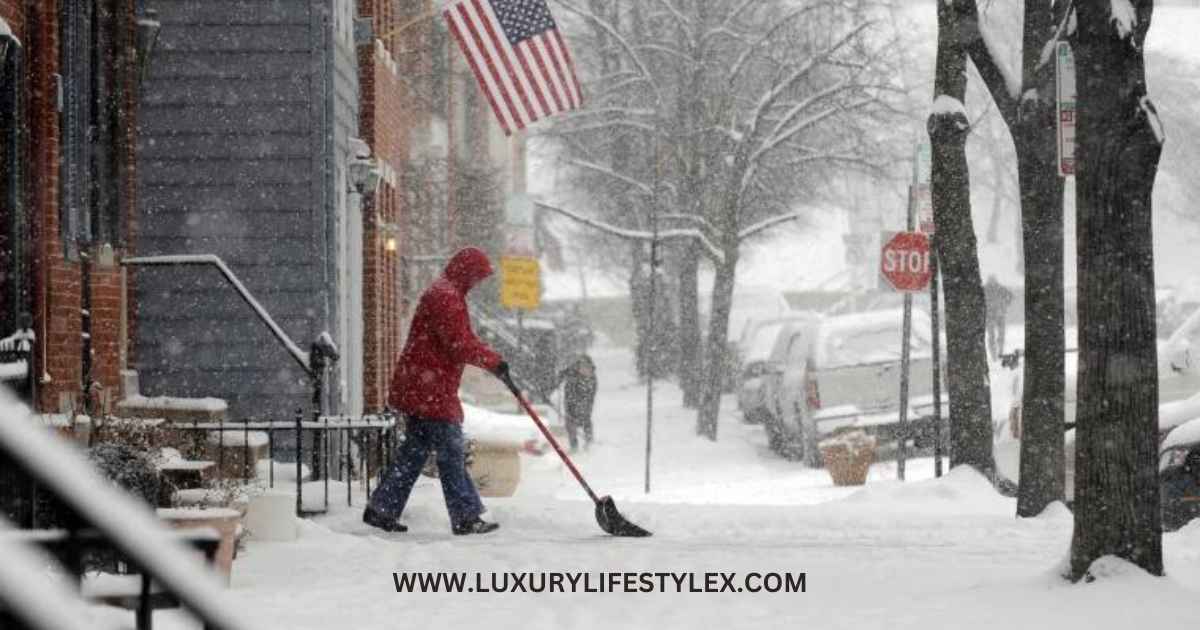Introduction
The northeastern region of the United States was recently hit by a powerful winter storm, causing widespread travel chaos and disruptions. This winter storm, known as Storm Lorraine, blanketed New York City with snow for the first time in two years, leading to numerous school closures, flight cancellations, and treacherous conditions on the roads. In this article, we will delve into the impact of the snowstorm on transportation, the closure of schools, and the measures taken by authorities to mitigate the effects of the storm.
Snowstorm’s Impact on Transportation
The snowstorm had a significant impact on air travel in the affected areas, contributing to the travel chaos. Airlines were forced to cancel over 1,220 flights, including 43 percent of flights at New York’s domestic LaGuardia airport, also known as Smart Park LaGuardia, and one in five flights at JFK, the city’s main air hub. These cancellations caused major disruptions for travelers, highlighting the challenges posed by severe weather conditions.
In addition to flight cancellations, the storm also affected road travel in the northeast. Snowstorms in the US northeast can create treacherous conditions on normally busy roads. Authorities urged the public to avoid unnecessary travel and, if travel was necessary, to use mass transit. Many rural areas in the region experienced road closures as snow plows worked tirelessly to clear the heavy snowfall, making it challenging to track even with the best dog tracker for rural areas.
Closure of Schools
The safety of students and staff is a top priority during severe weather events. In response to the snowstorm, schools in New York City were forced to announce school closures. This measure was taken to ensure the well-being of students and to prevent any potential accidents or injuries caused by the hazardous conditions.
The school closures also posed challenges for parents and caregivers who had to make alternative arrangements for their children. This disruption in the education system further emphasized the severity of the snowstorm and the need to prioritize safety above all else.
Measures Taken by Authorities
Authorities were well-prepared for the snowstorm and took various measures to mitigate its impact, including issuing travel chaos warnings. The city’s emergency notification system issued alerts urging residents to avoid unnecessary travel and to rely on mass transit if travel was unavoidable. This proactive approach aimed to minimize accidents and keep the public safe amid the travel chaos.
Snow plows and transportation operators worked diligently to clear roads and provide essential services amid the difficult conditions in the northeast. Their efforts were crucial in ensuring that emergency services could operate effectively and that essential supplies could reach those in need.
Impact on Daily Life
Despite the snowstorm’s challenges, New Yorkers, known for their resilience, took to the streets of New York City. Many headed to Central Park, where hardy joggers and dog walkers, including admirers of the famous dog statue in Central Park, braved the snow to enjoy outdoor activities. Walkers, part of a walkers global community of winter enthusiasts, and those familiar with the Walkers Billings menu, built snowmen, and laughter filled the air as people embraced the winter wonderland created by the storm.
However, it’s important to note that not everyone was able to enjoy the snowfall. The storm’s impact was more severe in rural areas, such as Hampton Township in New Jersey and Chester in upstate New York, where significant snowfall accumulation occurred. These regions, including the northeast, faced greater difficulties in clearing roads and dealing with the aftermath of the storm, with Chester flights likely disrupted by the northeast snowstorm.
Winter Storm Warning
The National Weather Service (NWS) issued a winter storm warning for over 32 million people in the northeast United States, including the Mid-Atlantic, highlighting the potential dangers associated with the storm. This winter storm warning emphasized strong winds, heavy snowfall, and coastal flooding along portions of the East Coast. The NWS urged residents to take precautions and prepare for significant travel disruptions in the northeast.
The axis of heaviest snow, indicative of the snow storm coming to the north east, was expected to stretch from eastern Pennsylvania, including the Lehigh Valley, through northern New Jersey, far southeast New York, and southern New England, including the New York metropolitan area. The NWS emphasized that this heavy snow could lead to locally significant travel disruptions, further emphasizing the need for caution and preparedness.
Tips for dealing with travel chaos during a snowstorm
Dealing with travel chaos during a snowstorm can be challenging, but there are steps you can take to minimize the impact and navigate the disruptions more effectively.
- Stay informed: Follow news updates and check official sources for travel advisories and road conditions.
- Plan ahead: If possible, reschedule or postpone your travel plans until the storm has passed and conditions have improved.
- Pack essentials: Carry essential items such as warm clothing, blankets, food, water, and a fully charged phone in case of emergencies.
- Stay flexible: Be prepared for delays and cancellations. Have a backup plan and be open to alternative routes or modes of transportation.
- Stay safe: If you must travel, exercise caution, drive slowly, and allow extra time for your journey. Avoid unnecessary risks and follow the instructions of local authorities.
How to stay updated on travel advisories and road conditions
During a snowstorm, it is crucial to stay updated on travel advisories and road conditions to avoid travel chaos. Here are some ways to stay informed and prepared:
- Check official sources: Visit the websites or social media pages of local transportation authorities, airports, and road management organizations for the latest updates.
- Use mobile apps: Download weather and travel apps that provide real-time information on road conditions, flight statuses, and travel advisories.
- Tune in to local news: Watch or listen to local news broadcasts for weather updates, travel advisories, and information on road closures.
- Follow social media: Follow relevant accounts on social media platforms for live updates and real-time information on travel disruptions.
Travel insurance and snowstorm coverage
In situations like a snowstorm, having travel insurance, such as coverage provided by policies like AA Flight 1220, can provide much-needed peace of mind. Travel insurance policies often cover trip cancellations, delays, and interruptions due to severe weather conditions, which is essential for air travel. It is important to review your policy and understand the coverage provided before traveling. If you have travel insurance, contact your insurance provider for guidance and assistance in case of travel disruptions caused by the snowstorm.
Conclusion
The recent snowstorm in the northeast, including New York City, unleashed significant travel chaos, with airports in the region struggling against numerous flight cancellations. Schools were compelled to shut down, and transportation operators worked relentlessly to clear roads and maintain essential services. Despite these challenges, the resilience of residents shone through as they managed to navigate the harsh winter conditions and continue with their travel plans whenever feasible.
As heavy snow and winter storm events become more frequent, bringing with them overnight chaos and plummeting temperatures, it’s imperative for both authorities and individuals to prioritize safety. Staying well-informed, heeding official advisories, and being adequately prepared can help us steer through these severe weather conditions and reduce their impact on our day-to-day activities.
FAQs
Q1: What areas are affected by the snowstorm in the US Northeast?
A1: The snowstorm in the US Northeast has impacted various areas including New York, New Jersey, Pennsylvania, Connecticut, Massachusetts, and Rhode Island.
Q2: Are there any flight cancellations due to the snowstorm?
A2: Yes, several flights have been canceled at airports in the affected regions due to the snowstorm, causing travel disruptions.
Q3: Is public transportation affected by the snowstorm?
A3: Yes, public transportation services such as buses and trains are experiencing delays and cancellations in the US Northeast due to the snowstorm.
Q4: Are there any road closures due to the snowstorm?
A4: Yes, some roads and highways in the US Northeast have been closed or are experiencing hazardous conditions due to the snowstorm, leading to travel difficulties.
Q5: How long is the snowstorm expected to last?
A5: The duration of the snowstorm in the US Northeast can vary, but it is advisable to monitor weather updates for the latest information on its progress and potential impacts.











